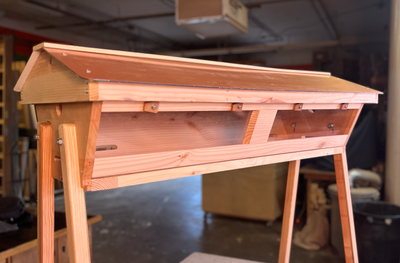If you haven’t already, be sure to read over the basic considerations that go into beginning beekeeping.
Here we are discussing Warre Hives, and why Warre keepers tend to be some of the most ardent about the style of hives they use.
HISTORY
The Warre (pronounced: WAR-ray) hive is named after its inventor, the French monk Abbé Émile Warré.
Warré studied hundreds of different hive designs and through study and use over time, realized that the Warre design is the most ideal for bees and keeper. His design focuses on simplicity, ease of management, minimal disruption, and mimicry of honeybees’ ideal natural environment or preferred shelter: a hollow tree. The narrow, tall shape of the Warré allows for retention of nest scent and heat, something bees prefer.
MANAGEMENT
Beekeepers who don’t want to manage their hives constantly and want to give bees a very natural colony experience adore their Warre hives. These are also keepers who want a fair amount of honey and don’t want to do an excessively heavy lifting.
Warre hives require less regular maintenance because management is done box by box, versus bar by bar or frame by frame. Warre keepers are the most hands off beekeepers, allowing bees to manage themselves, as they have for millions of years and still do in feral colonies.
Compared to other box style hives such as the Langstroth, Warre boxes are narrower and shorter. This means the boxes are smaller and lighter, generally about 30-40 lbs when full of honey. The management philosophy of a Warre is something Abbé Warré himself developed and makes Warré management easier to navigate.
Bees prefer and need fresh new comb, as environmental toxins and chemicals accumulate in comb, as discovered by entomologist Maryann Frazier at Penn State.
In order to cycle out old comb regularly, additional boxes are necessary for nectar and pollen storage during foragen season are added to the bottom of the stack. The queen bee then pushes her brood chamber and egg laying work down to the new box, and the top boxes are cleaned and filled with honey. Doing this several times through a season means that the harvestable honey ends up on top of the stack and can simply be lifted off. However, it also means having to lift off several boxes in order to add a box to the bottom of the stack.





